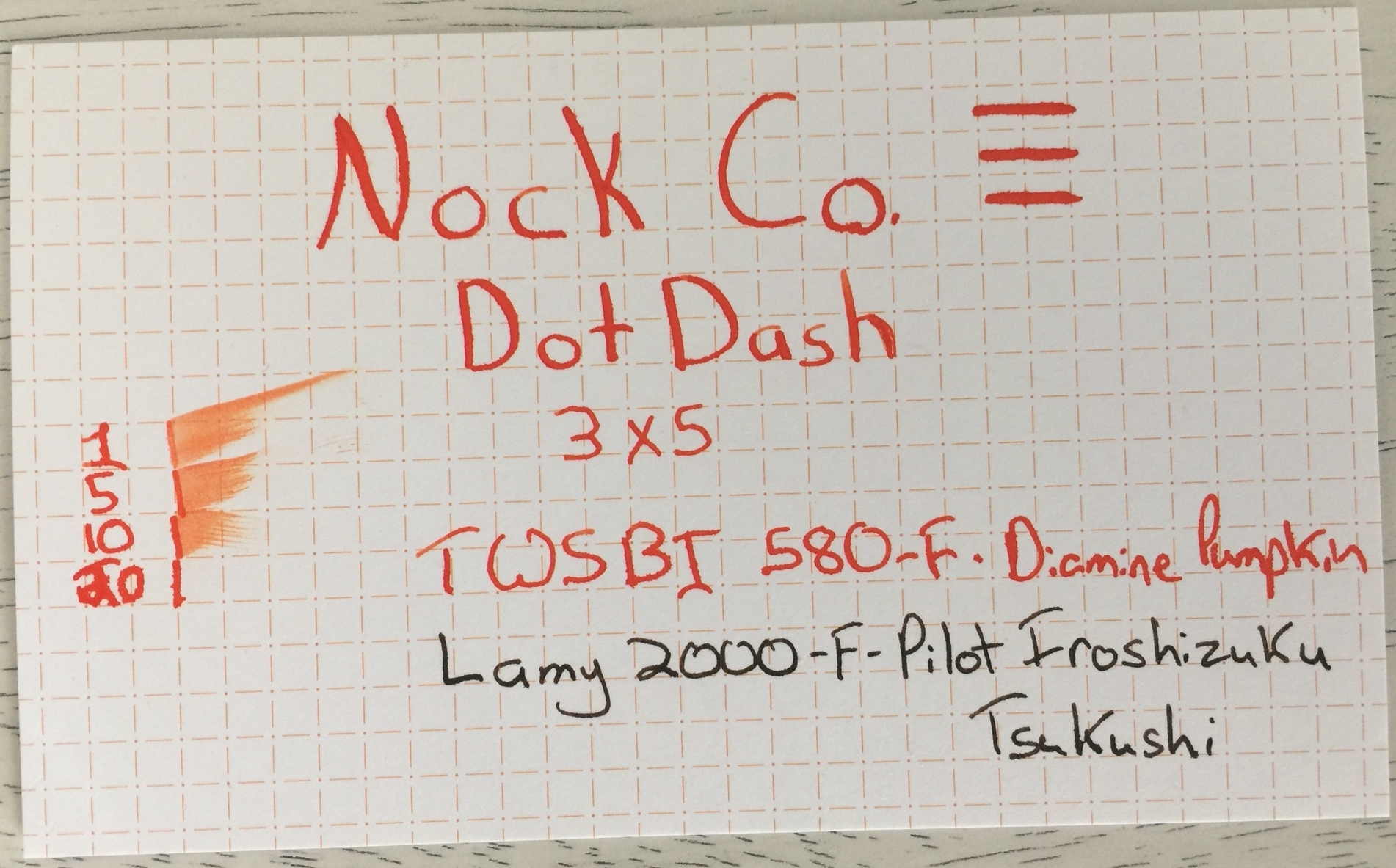The index card is one of the most under-appreciated office supplies. It was created as a tool for organizing data and eventually became the foundation of the revolutionary Dewey Decimal System. Yes, at one moment in time, a 3x5 piece of card stock was the most powerful tool for organizing data. As digital methods of organization took over, index cards took their place on the shelf next to White-Out and typewriter ribbon. Twelve years ago, Merlin Mann unleashed the Hipster PDA into the wild, a simple index card data capture system, and lifehackers and analog lovers alike rediscovered the power of this little stationary delight. Index cards are small, versatile, and easy to shuffle and rearrange. They function well as capture devices; however, the race to the bottom has resulted in penny index cards that are flimsy and perform horribly with fountain pens.
You may know Nock Co., the creation of Brad Dowdy and Jeffrey Bruckwicki, for its creative pen cases; however, the company also produces a fine line of paper products, including its DotDash 3x5 Note Cards. DotDash refers the Nock Co.'s trademark paper grid system, that provides the best aspects of both the grid and matrix paper patterns, common among stationary products.
Nock Co.'s DotDash cards feel thicker and sturdier than the average index card. While regular index cards start to curl and bend in the sleeve of my work bag, DotDash cards stay flat. The DotDash cards are also noticeably smoother to the touch than traditional index cards. The DotDash lines are laser-sharp, while the printed lines on the traditional index cards show ink bleed and inconsistent printing. Of course, there are many different brands of index cards, but I went with the traditional stock cards form Amazon, as most would probably do when purchasing in bulk.
Nock Co.'s websites claim that their DotDash Note Cards "can handle almost any pen and ink you throw at it," so I pulled out my flexiest pen and favorite high-feather ink to put this claim to the test. I also used my daily carry ink and pen combo, Lamy 2000 with Pilot Iroshizuku Tsukushi ink.
The Plain Jane index cards performed just as poorly as expected. The Diamine Pumpkin ink feathered almost as soon as it touch the paper, and even the better-behaved Tsukushi ink in my Lamy 2000 performed poorly. The card had an excellent dry time, compared to the DotDash card, but this was only because the ink feathered instantly. Nock Co.'s DotDash card performed like a champ, with minimal feathering with the 2000 and Tsukushi ink combination. Noodler's Ahab and Diamine Pumpkin ink did produce moderate feathering on the DotDash card, but it did perform significantly better than the Plain Jane card. Truth be told, I don't see myself using a flex nib on an index card, so this isn't a major concern. The TWSBI Diamond 580 is the most markedly different between the Plain Jane index cards, which perform horribly, and the DotDash cards, which shows only minimal feathering. The DotDash card performs surprisingly well, considering that Diamine Pumpkin feathers significantly on low-quality paper, and the TWSBI 580's nib leaves a very juicy line.
Nock Co. DotDash
Plain Jane
Nock Co DotDash
Plain Jane
Nock Co. DotDash Note Cards are exceptional performers, and I keep a stack in my work bag at all times. I reach for these durable cards to jot down quotes and arrange ideas for presentations, and they hold up well to any ink and pen combo that I throw at them. At $6 for 50 cards, Nock Co.'s DotDash Note Cards haven't completely eliminated my need for the penny-per-card competitors; however, these cards are a worthy addition to any pen case or go bag.







